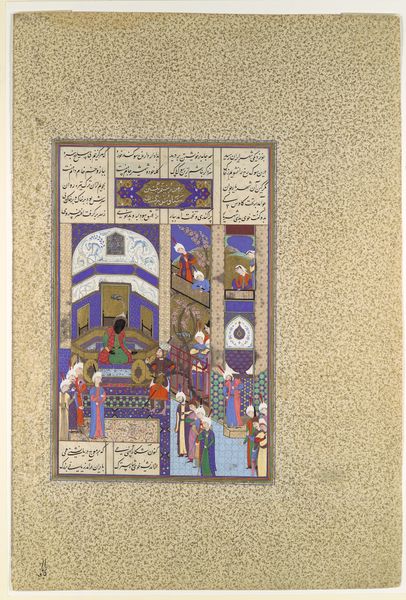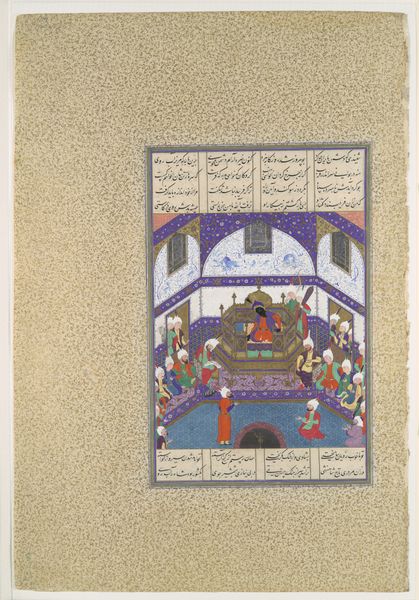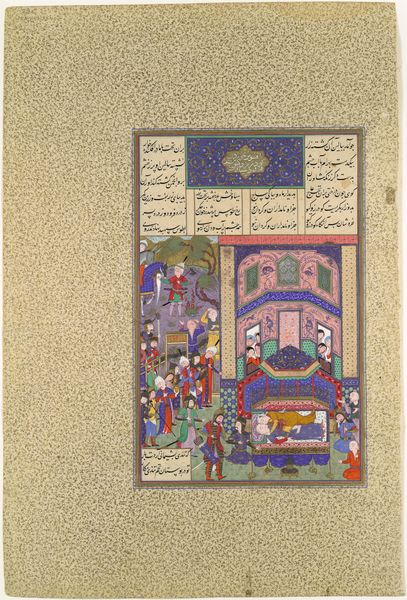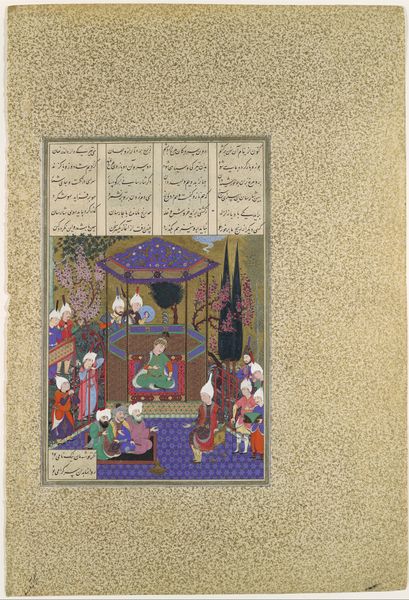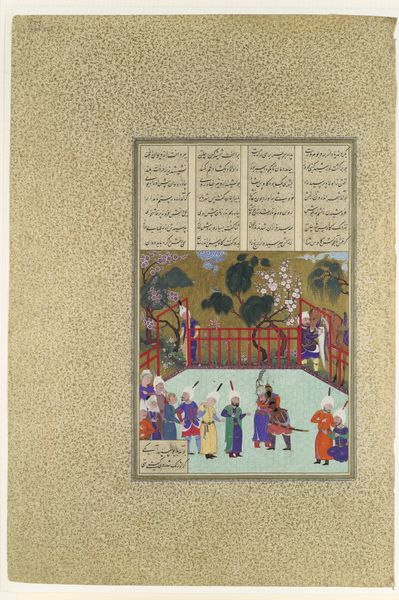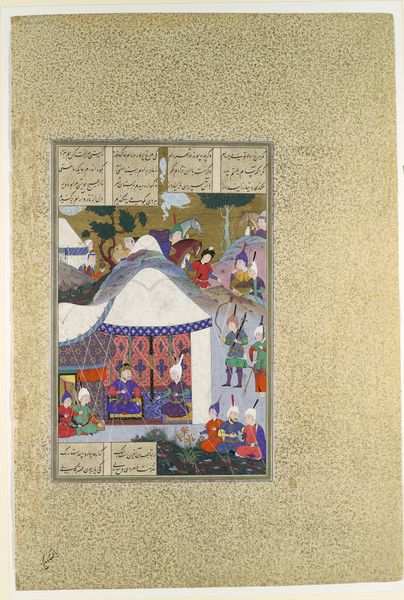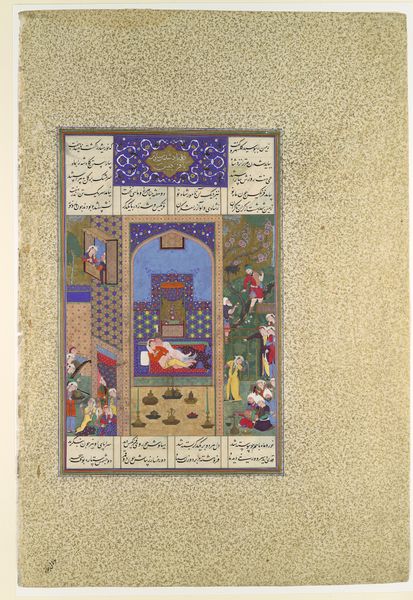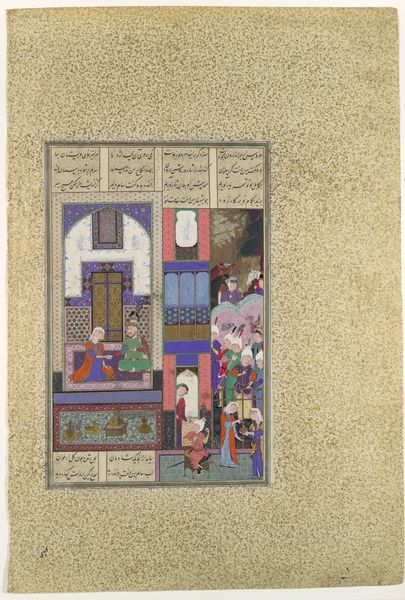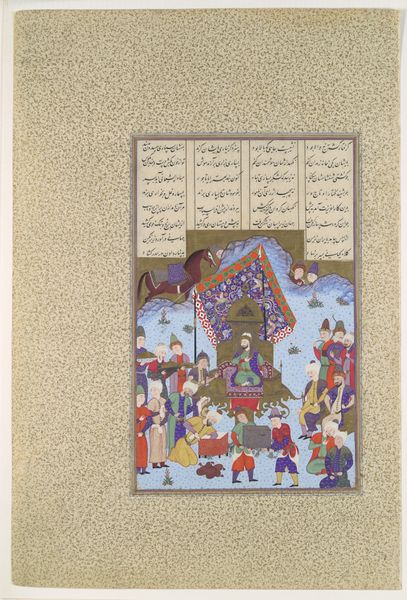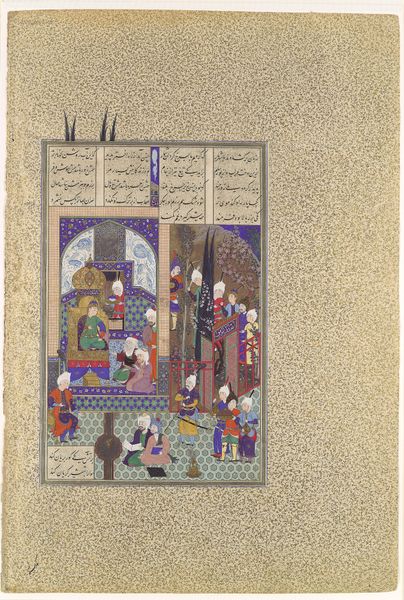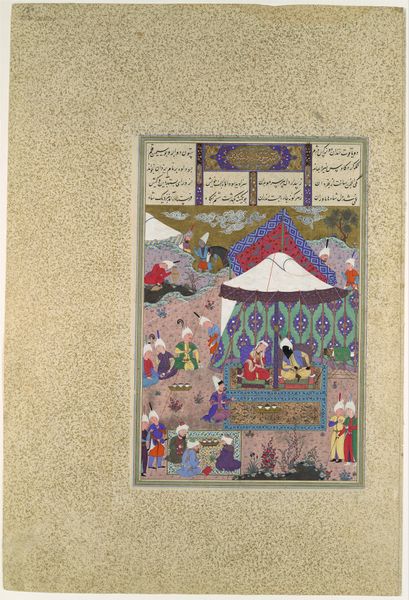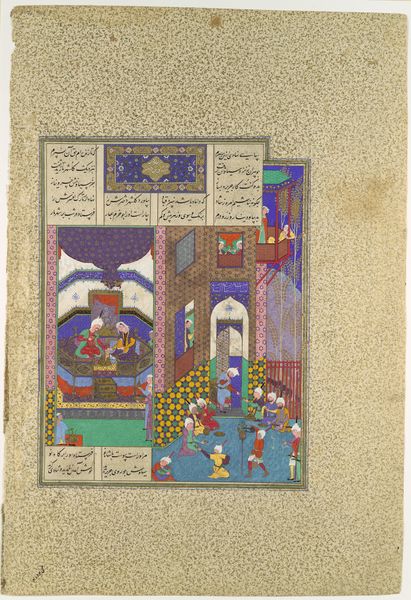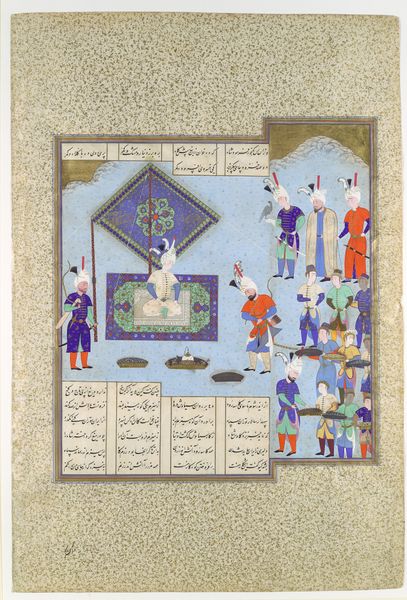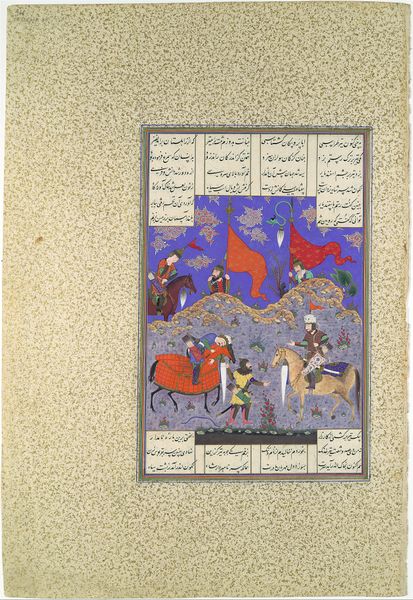
"Rustam Brings the Div King to Kai Kavus for Execution", Folio 127v from the Shahnama (Book of Kings) of Shah Tahmasp 1500 - 1555
0:00
0:00
painting, watercolor
#
portrait
#
page thumbnail
#
narrative-art
#
painting
#
landscape
#
figuration
#
watercolor
#
horse
#
men
#
islamic-art
#
history-painting
#
miniature
#
watercolor
Dimensions: Painting: H. 11 3/16 in. (28.4 cm) W. 7 1/8 in. (18.1 cm) Entire Page: H. 18 5/8 in. (47.3 cm) W. 12 9/16 in. (31.9 cm)
Copyright: Public Domain
Editor: Here we have a vibrant and intricate painting, "Rustam Brings the Div King to Kai Kavus for Execution," from the Shahnama of Shah Tahmasp, dating from 1500 to 1555. It's done with watercolor, and I find the overall composition so striking; it's packed with figures, yet there's a clear hierarchy. What jumps out to you in terms of how this work operated within its society? Curator: What I find compelling is the political context and performance of power within the miniature format. These Shahnama folios weren't created in a vacuum. The very patronage of Shah Tahmasp reflects an ambition to visually reinforce Safavid rule through a legitimizing narrative—essentially using Firdausi’s epic to say "We are the rightful heirs." Editor: So it's a form of propaganda almost? Curator: One could certainly see it that way, yes. Look at the Div King; he is literally brought before Kai Kavus for judgement, demonstrating subservience to royal authority. Consider how these images were circulated within the courtly sphere and the impact of disseminating such carefully crafted visual messages of dominance. How do you see the role of spectacle playing into that? Editor: I suppose seeing it on display would signal an immediate threat for political competitors. Were there similar strategies in other cultures? Curator: Absolutely, the use of visual art as a tool of political legitimation is universal. Think of Roman triumphal arches or Renaissance portraiture. This folio, though, encapsulates a distinctly Persian artistic language serving that timeless political purpose. Editor: So, beyond the surface beauty, it served a much larger cultural purpose. I've certainly got more food for thought when I view the work now! Curator: Precisely! Art, as a document, informs us as to the machinations of socio-political ideology.
Comments
No comments
Be the first to comment and join the conversation on the ultimate creative platform.
